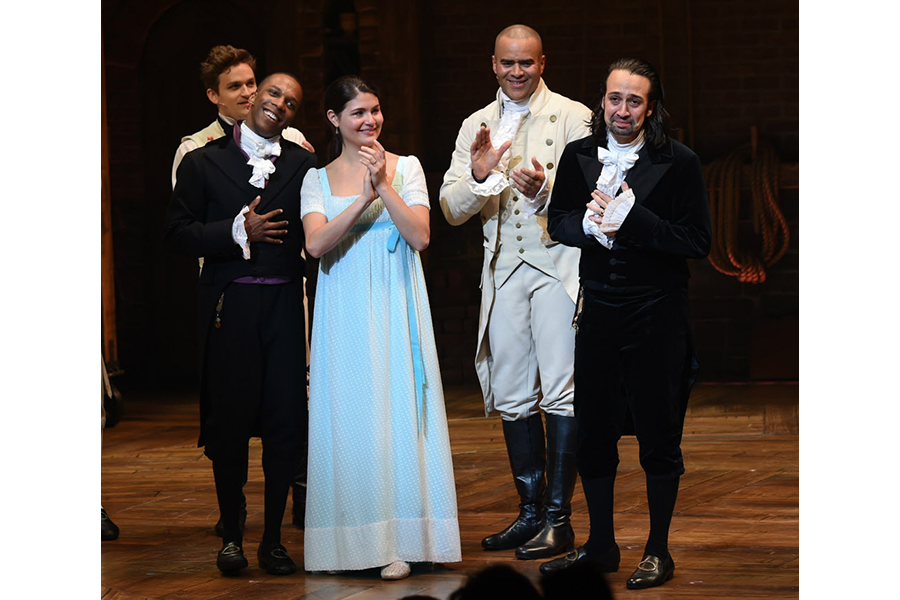Where does musical phenomenon 'Hamilton' go from here?
The musical “Hamilton” became a culture-dominating phenomenon. Now the show is still on Broadway, but most of the original cast, including star Lin-Manuel Miranda, has departed. Where does the smash hit musical go now?
For starters, to other cities. There is already a Chicago production, and a national tour will start in San Francisco in March. A West End production starts in November.
What we likely won’t see? More of the story. Although a hit movie often leads to a sequel, Laurence Maslon, arts professor at New York University, points out that the Great White Way and Hollywood operate in very different ways. “Broadway doesn’t really produce ‘Son of Hamilton’ particularly easily,” says Professor Maslon, who is also the author of the upcoming book “Broadway to Main Street.”
However, if you saw the movie “Moana,” you already heard some of Mr. Miranda’s new music. He’s also set to star in the upcoming musical film “Mary Poppins Returns.” Dr. Marilyn Plotkins, chair of the Suffolk University Theatre Department, sees it as a good thing that Miranda’s work will be seen beyond Broadway, noting the diversity of the “Hamilton” cast.
“He will bring the music of where our culture is today [to other projects] and as a result, I think he will tap into more and more people who have been disaffected or have felt left out by conventional Broadway and movie musicals,” she says.
Maslon sees “Hamilton” as having had the biggest impact in the music industry. The soundtrack had the highest debut on the Billboard 200 for a musical soundtrack since Billboard brought together its mono album chart and stereo album chart in 1963. Because of the album’s popularity, the show could live on in a different way, he suggests.
“Many, many more people can and want to hear it than will ever to get to see it onstage,” Maslon says. He also thinks the American roots of the “Hamilton” narrative lends an interesting aspect to its legacy. (Historic sites involving Mr. Hamilton have seen big visitor increases.) “I think because it’s part of where we live and where we’re from, it will have a lot more sort of tangible influence in that way,” he says.
As for Broadway, Dr. Plotkins believes “Hamilton” has already inspired other writers to push boundaries, citing comparatively newer shows “Dear Evan Hansen” and “Natasha, Pierre & The Great Comet of 1812.”
“I think that this show makes young Broadway writers bolder,” she says.






